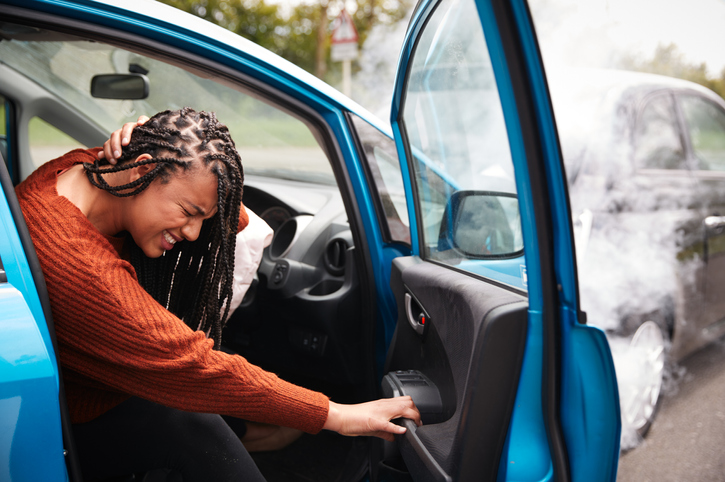This article will provide you with simple tips to reduce your chances of being injured during a car accident (especially rear end collisions).
1. Always have your headrest properly adjusted. Ideally the top of your headrest should be level with the top of your head.
If your headrest is too low, your head will extend above and over the restraint, which then acts as fulcrum and increases your injury risk. When you are struck from behind, a 1-3 inch vertical rise in your head will occur. This can further bring your head up and over the headrest aggravating your neck. Make sure the adjustable headrest is locked into position. When the head snaps back, it could make contact with the top of the headrest and may drive it down like a hammer drives a nail. Unfortunately, headrests are designed for the 50% male (5’10”) population. Taller individuals should still adjust the headrest into the highest position.
2. Keep the back of your head as close to the headrest as possible.
“Backset” is the distance from the back of your head to the front of the headrest. A starting backset greater than 2 inches decreases the ability of the head restraint to protect against neck injury. Studies have found that neck symptoms increased when the backset distance was more that 4 inches.
3. Don’t sit too close to the steering wheel.
Sitting too close to the steering wheel can result in the airbag hitting you at full deployment speed (around 200 mph). In an ideal situation you want to contact the airbag after if fully deploys. You should sit at least 10 inches from the steering wheel (measured from the center of the steering wheel to your sternum/breast bone).
4. Buckle up even if you are in the backseat.
I think by now everyone knows to buckle up. Most cars have airbags and without being buckled up the airbags become a deadly weapon. I think its pretty common to be lazy when you are in the back seat, especially when you don’t have to worry about being struck by a 200 mph airbag. If you don’t want to buckle up for yourself, you should at least do it for the front seat passengers. When the rear seat passengers are unrestrained, the fatality risk to front seat occupants is increased by up to 75%.
5. Don’t allow passengers to put their feet on the dashboard. If they are in this position during an accident, it could result in serious injury. Generally you always want to keep your arms and legs away from where the airbag deploys.
The above recommendations are some of things you can do to reduce your chances of being injured in automobile accidents. The next article, “To brace or not to brace for impact”, will cover what to do if you look in your review mirror and see that someone is clearly going to ram into the back of your vehicle.
*Please note that every patient is different. The content and tips displayed on this page are for educational purposes only, and do not substitute for medical advice. Please consult with a medical or healthcare provider, such as Dr. Phipps, for specific diagnosis and treatment advice. Williamsville, NY 14221 Chiropractor

